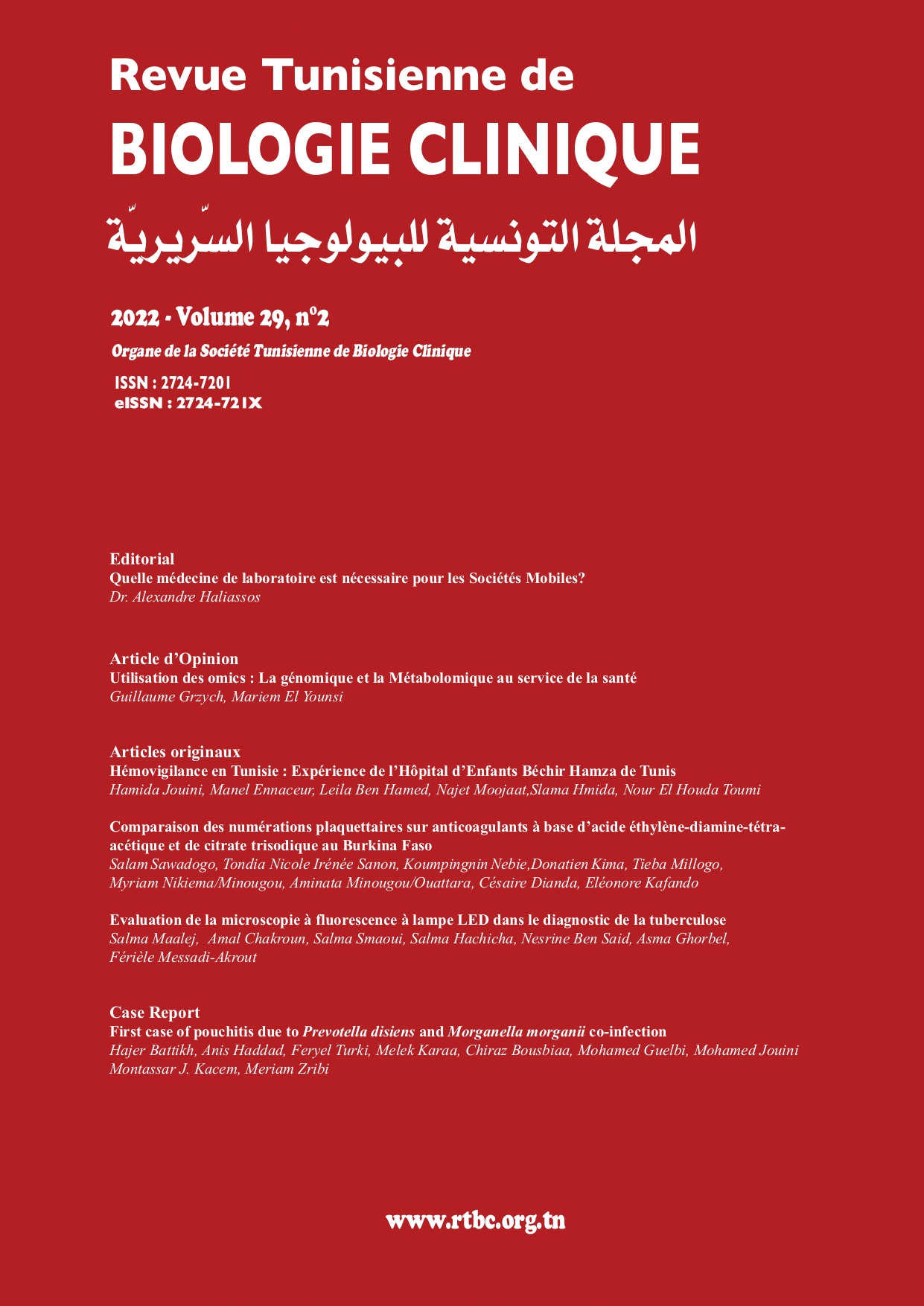Abstract
Introduction : Tuberculosis (TB) remains one of the most common pathologies in the world. For a long time, Ziehl-Neelsen (ZN) staining was the reference technique for direct examination, but currently auramine (AUR) tends to replace it. Our study aimed to evaluate the contribution of AUR staining compared to ZN staining in the diagnosis of TB. Patients and methods : This is a retrospective study over a period from July 1st, 2013 to July 31st, 2016, which included all the samples of pulmonary and extra-pulmonary origin having benefited from ZN staining and that at the AUR (n=4583). Results : A total of 38892 samples of pulmonary and extra-pulmonary origin were examined, of which 4583 smears were examined with the AUR, i.e. a rate of 11.8%. The comparison of AUR versus ZN showed a concordance rate of 97.7%. Compared to the ZN reference stain, AUR was significantly more sensitive for sputum and lymph node samples (p<0.05). The sensitivity of the AUR increases especially for the pauci-bacillary forms. Considering culture as the reference technique, our results show that the fluorescence microscope is significantly more sensitive than ZN optical microscopy (49.5% versus 41.5%), while the specificity and the VPN of the two methods are comparable. Considering PCR as the reference method, our study shows a non-significant gain in sensitivity of AUR compared to ZN of 8% (44% versus 36%). The specificity is good with a rate of 98.9% for both stains. Conclusion : The generalization of the AUR staining method in our laboratory would improve diagnostic performance which would have a positive impact on patient care.

This work is licensed under a Creative Commons Attribution 4.0 International License.
Copyright (c) 2022 Revue Tunisienne de BIOLOGIE CLINIQUE

